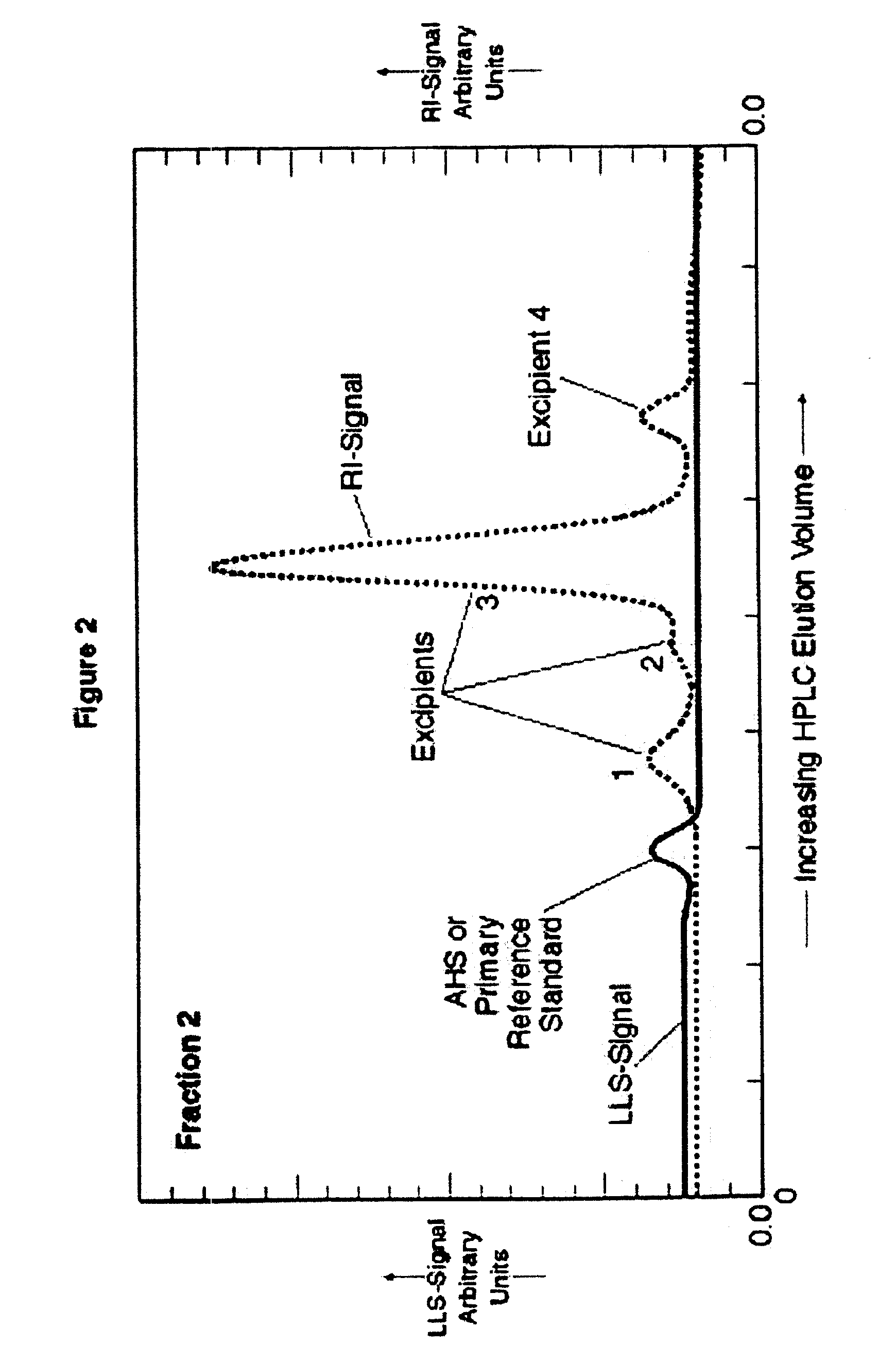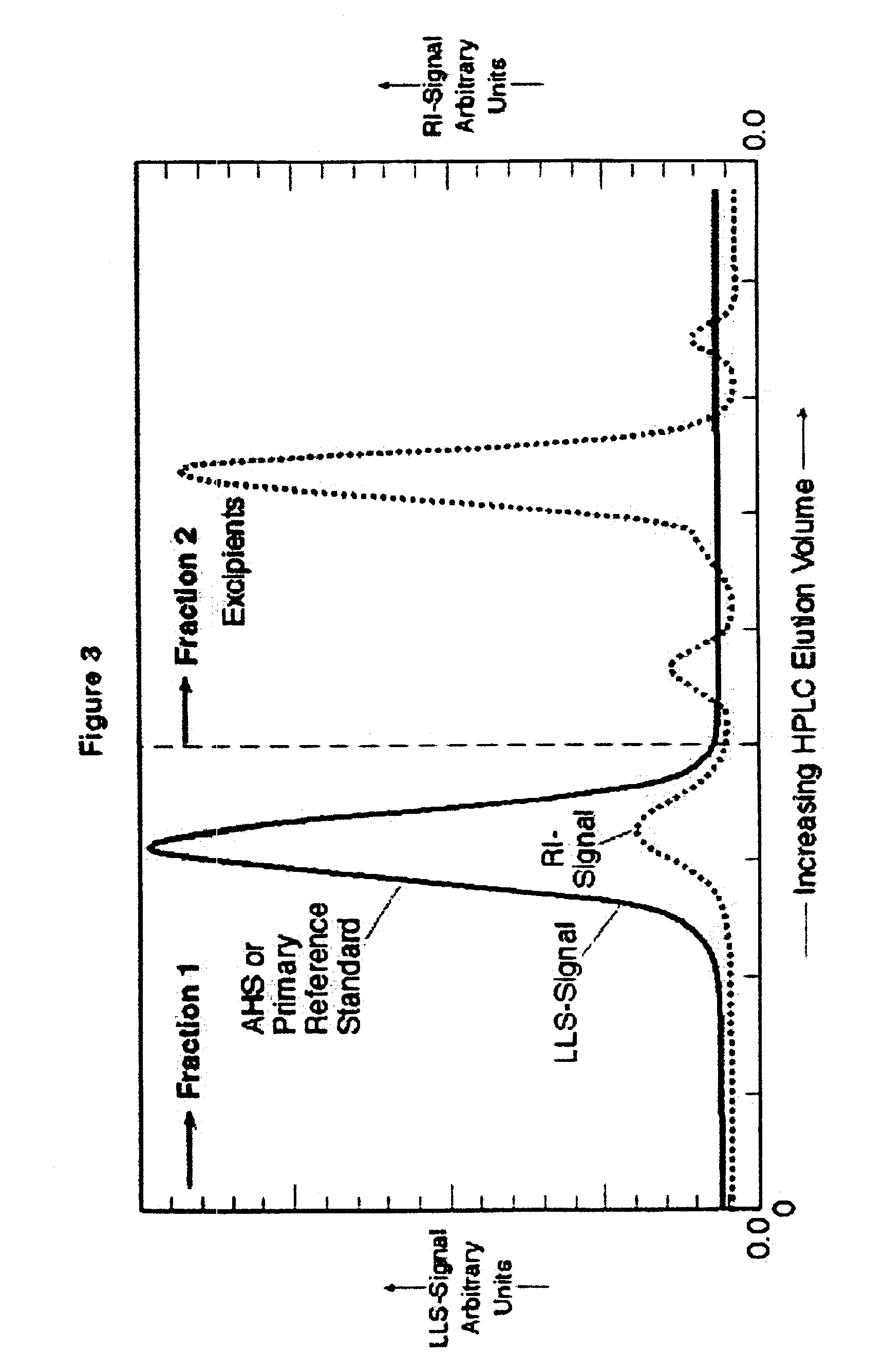Method for producing purified hematinic iron-saccharidic complex and product produced
- Summary
- Abstract
- Description
- Claims
- Application Information
AI Technical Summary
Benefits of technology
Problems solved by technology
Method used
Image
Examples
examples
[0081]For purposes of the present invention, reference to water content of an undried substance or composition, in other words, prior to being dried, is given as a percentage of the total weight of the undried substance or composition. Water content of a dried substance or composition is given as a percentage of the total weight of dry matter only, excluding all moisture.
[0082]Following is the procedure for low pressure gel permeation chromatography used in preparing the samples for which test results appear in FIGS. 1, 2 and 10, including preparation of purified, substantially excipient-free AHS. The specific application of low pressure gel permeation chromatography (GPC) for AHS separation employs crosslinked polyglucans or dextrans displaying molecular weight exclusion characteristics greater than about 5,000 and preferably greater than about 1,500 Daltons. The stationary GPC phase is “Sephadex G-10” (Amersham-Pharmacia Biotech, Piscataway, N.J.). A solvent reservoir supplies a m...
PUM
| Property | Measurement | Unit |
|---|---|---|
| Temperature | aaaaa | aaaaa |
| Temperature | aaaaa | aaaaa |
| Temperature | aaaaa | aaaaa |
Abstract
Description
Claims
Application Information
 Login to View More
Login to View More - R&D
- Intellectual Property
- Life Sciences
- Materials
- Tech Scout
- Unparalleled Data Quality
- Higher Quality Content
- 60% Fewer Hallucinations
Browse by: Latest US Patents, China's latest patents, Technical Efficacy Thesaurus, Application Domain, Technology Topic, Popular Technical Reports.
© 2025 PatSnap. All rights reserved.Legal|Privacy policy|Modern Slavery Act Transparency Statement|Sitemap|About US| Contact US: help@patsnap.com



